When it comes to real estate, having a well-crafted marketing plan presentation is crucial for success. Whether you’re a real estate agent looking to attract new clients or a property developer showcasing your latest project, effectively presenting your marketing plan is key to capturing the attention of potential buyers and investors. In this article, we will explore the essential elements of a marketing plan presentation for real estate and provide you with valuable tips on how to create an engaging and visually appealing presentation that will help you achieve your goals.
Importance of a well-crafted marketing plan presentation
A marketing plan presentation serves as a roadmap for your real estate business. It outlines your strategies, goals, target audience, and the steps you will take to reach them. A well-crafted presentation not only showcases your expertise and professionalism but also instills confidence in your potential clients or investors. It demonstrates that you have a clear vision and a solid plan in place to market and sell or lease properties effectively.
Moreover, a marketing plan presentation provides a structured approach to your marketing efforts. It helps you stay organized and focused, ensuring that you cover all the necessary aspects of your real estate marketing. By creating a comprehensive presentation, you are more likely to identify any gaps in your marketing strategy and make necessary adjustments to maximize your chances of success.
Understanding the target audience for your marketing plan presentation
Before diving into the details of your marketing plan presentation, it is crucial to understand your target audience. Different segments of the real estate market require different approaches, and tailoring your presentation to suit the needs and preferences of your target audience is essential.
Consider the demographics, psychographics, and preferences of your potential clients or investors. Are you targeting first-time homebuyers, luxury property investors, or commercial real estate developers? Understanding their motivations and pain points will enable you to craft a marketing plan presentation that speaks directly to their needs and desires.
Key elements to include in your marketing plan presentation
To create a comprehensive marketing plan presentation for real estate, there are several key elements that you should include.
- Executive Summary: Start your presentation with an executive summary that provides an overview of your marketing plan. This section should highlight the key goals, strategies, and target audience of your marketing efforts.
- Market Analysis: Conduct a thorough analysis of the real estate market in which you operate. Include information on market trends, competition, and target demographics to support your marketing strategies.
- Marketing Objectives: Clearly define your marketing objectives. Are you aiming to increase brand awareness, generate leads, or sell a specific property? Your objectives should be specific, measurable, achievable, relevant, and time-bound (SMART).
- Marketing Strategies: Outline the strategies you will use to achieve your marketing objectives. This could include a mix of online and offline marketing tactics such as social media marketing, email campaigns, direct mail, and open houses.
- Budget and Timeline: Provide a breakdown of your marketing budget and timeline. This will demonstrate that you have carefully considered the resources required to implement your marketing plan and have a realistic timeline for achieving your goals.
- Measurement and Evaluation: Specify how you will measure the success of your marketing efforts. This could include metrics such as website traffic, lead conversion rates, or sales numbers. Regularly evaluate your performance to make data-driven adjustments to your marketing strategies.
How to structure your marketing plan presentation
Now that you know the key elements to include, it’s important to structure your marketing plan presentation in a logical and engaging manner. Here’s a suggested structure to follow:
- Introduction: Start with an attention-grabbing introduction that sets the tone for your presentation and captures the interest of your audience.
- Executive Summary: Provide a concise overview of your marketing plan, highlighting the key objectives and strategies.
- Market Analysis: Present your research findings on the real estate market, including trends, competition, and target demographics.
- Marketing Objectives: Clearly define your marketing objectives and explain why they are important for your real estate business.
- Marketing Strategies: Detail the strategies you will implement to achieve your marketing objectives. Explain the rationale behind each strategy and how it aligns with your target audience.
- Budget and Timeline: Present your budget and timeline in a clear and organized manner. Use visual aids such as charts or graphs to enhance clarity.
- Measurement and Evaluation: Explain how you will measure the success of your marketing efforts and the tools or metrics you will use for evaluation.
- Conclusion: Summarize your marketing plan presentation, restating the key points and highlighting the benefits of working with your real estate business.
Tips for creating visually appealing and engaging marketing plan presentations
To make your marketing plan presentation visually appealing and engaging, consider the following tips:
- Use High-Quality Images: Incorporate high-quality images of the properties you are marketing. Visuals play a crucial role in capturing the attention of your audience and showcasing the unique features of each property.
- Utilize Infographics: Use infographics to present data and statistics in a visually appealing and easy-to-understand format. Infographics can help simplify complex information and make it more digestible for your audience.
- Choose a Professional Design: Select a professional and cohesive design for your presentation. Use consistent fonts, colors, and layouts to create a polished and branded look.
- Keep it Concise: Avoid overwhelming your audience with too much information. Keep your text concise, use bullet points to outline key points, and focus on presenting the most relevant and impactful information.
- Incorporate Visual Hierarchy: Use visual hierarchy to guide your audience’s attention. Make important information stand out by using larger fonts, bold text, or different colors.
- Add a Call to Action: Include a clear and compelling call to action at the end of your presentation. This could be a request for a meeting, a call to visit your website, or an invitation to attend an upcoming event.
Incorporating data and analytics into your marketing plan presentation
Data and analytics play a critical role in informing your marketing strategies and evaluating their effectiveness. When creating your marketing plan presentation, consider the following:
- Use Data to Support Your Strategies: Incorporate relevant data and statistics to support your marketing strategies. This could include market research findings, demographic information, or performance metrics from previous campaigns.
- Visualize Data with Charts and Graphs: Present data in a visually compelling way using charts, graphs, or tables. Visualizing data can help your audience better understand the information and make informed decisions.
- Highlight Key Metrics: Identify key metrics that you will track to measure the success of your marketing efforts. Include these metrics in your presentation and explain how they will be used to evaluate your performance.
- Provide Insights and Recommendations: Use data analysis to provide insights and recommendations for improving your marketing strategies. Explain how you will use data to make data-driven decisions and optimize your marketing efforts.
Delivering an effective marketing plan presentation
Creating a well-crafted marketing plan presentation is only half the battle. To truly make an impact, you need to deliver your presentation effectively. Here are some tips to help you deliver an effective marketing plan presentation:
- Practice, Practice, Practice: Practice your presentation multiple times to ensure that you are confident and well-prepared. Rehearse your talking points, transitions, and timing to deliver a seamless presentation.
- Engage Your Audience: Make your presentation interactive and engaging by asking questions, encouraging discussion, or incorporating multimedia elements such as videos or interactive slides.
- Speak Clearly and Confidently: Use clear and concise language, speak at a moderate pace, and project confidence. Maintain eye contact with your audience and use gestures and body language to enhance your delivery.
- Tailor Your Presentation to Your Audience: Adjust your presentation style and content to suit the needs and preferences of your audience. Make sure to address their specific concerns and interests.
- Be Prepared for Questions: Anticipate potential questions and prepare thoughtful and well-informed answers. This will demonstrate your expertise and help build trust with your audience.
Resources and tools for creating marketing plan presentations
Creating a marketing plan presentation can be a daunting task, but fortunately, there are numerous resources and tools available to help you. Here are a few recommendations:
- Presentation Software: Use presentation software such as PowerPoint, Keynote, or Google Slides to create your marketing plan presentation. These tools offer a wide range of templates, designs, and features to enhance your presentation.
- Graphic Design Tools: If you want to take your presentation to the next level, consider using graphic design tools such as Canva or Adobe Creative Cloud. These tools allow you to create custom graphics, infographics, and visual elements to make your presentation visually appealing.
- Market Research Reports: Access market research reports and industry analyses to gather valuable insights and data to support your marketing strategies. Websites such as Statista or MarketResearch.com provide a wealth of information on various real estate markets.
- Online Learning Platforms: If you want to improve your presentation skills, consider enrolling in online courses or watching tutorials on platforms such as Udemy or LinkedIn Learning. These platforms offer a wide range of courses on presentation skills, public speaking, and storytelling.
Conclusion: Putting it all together for real estate success
A well-crafted marketing plan presentation is a powerful tool in the real estate industry. It allows you to showcase your expertise, attract potential clients or investors, and set yourself apart from the competition. By understanding your target audience, incorporating key elements, and delivering your presentation effectively, you can increase your chances of real estate success.
Remember, creating a marketing plan presentation is an iterative process. Continuously evaluate your strategies, measure your performance, and make necessary adjustments to optimize your marketing efforts. With the right tools, resources, and a clear vision, you can create a compelling marketing plan presentation that drives real estate success.
Now, it’s time to put your knowledge into action and start creating your own marketing plan presentation for real estate. Good luck!









